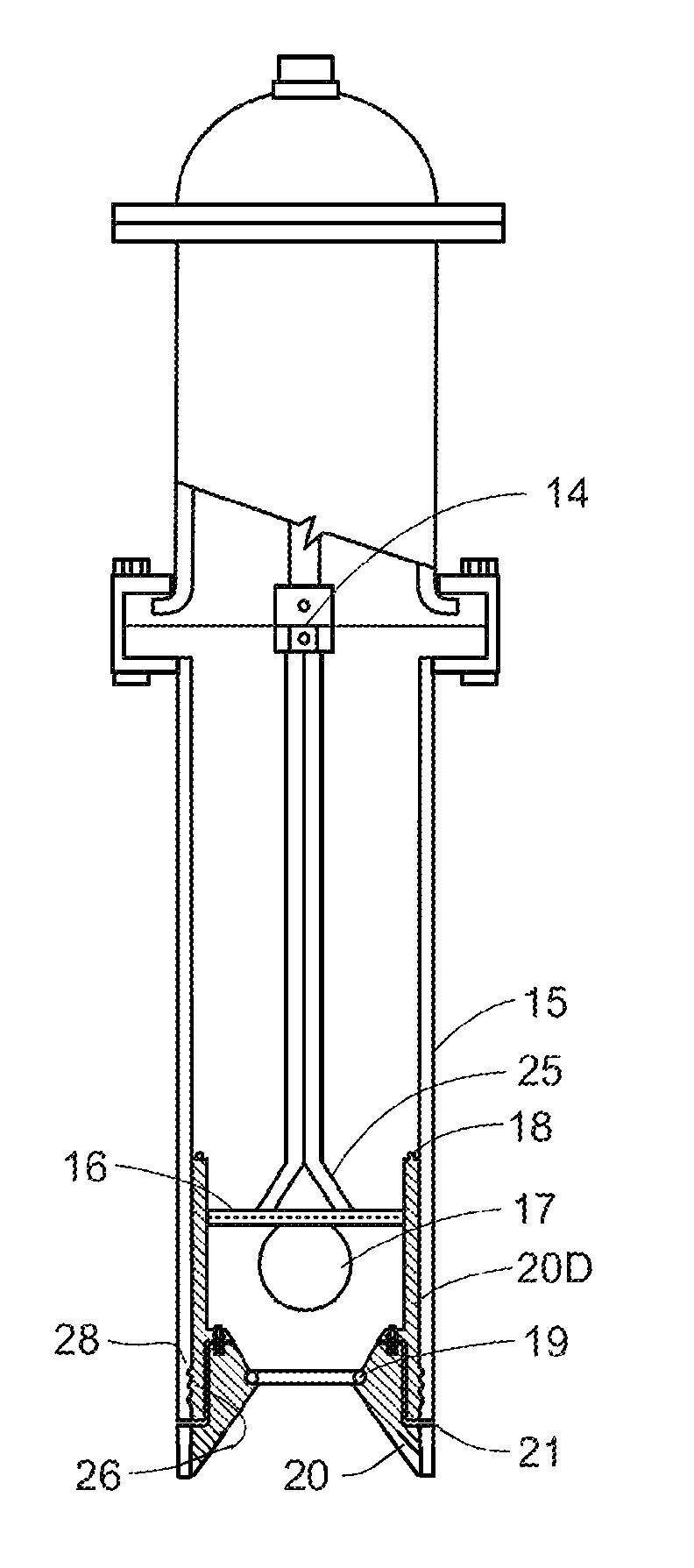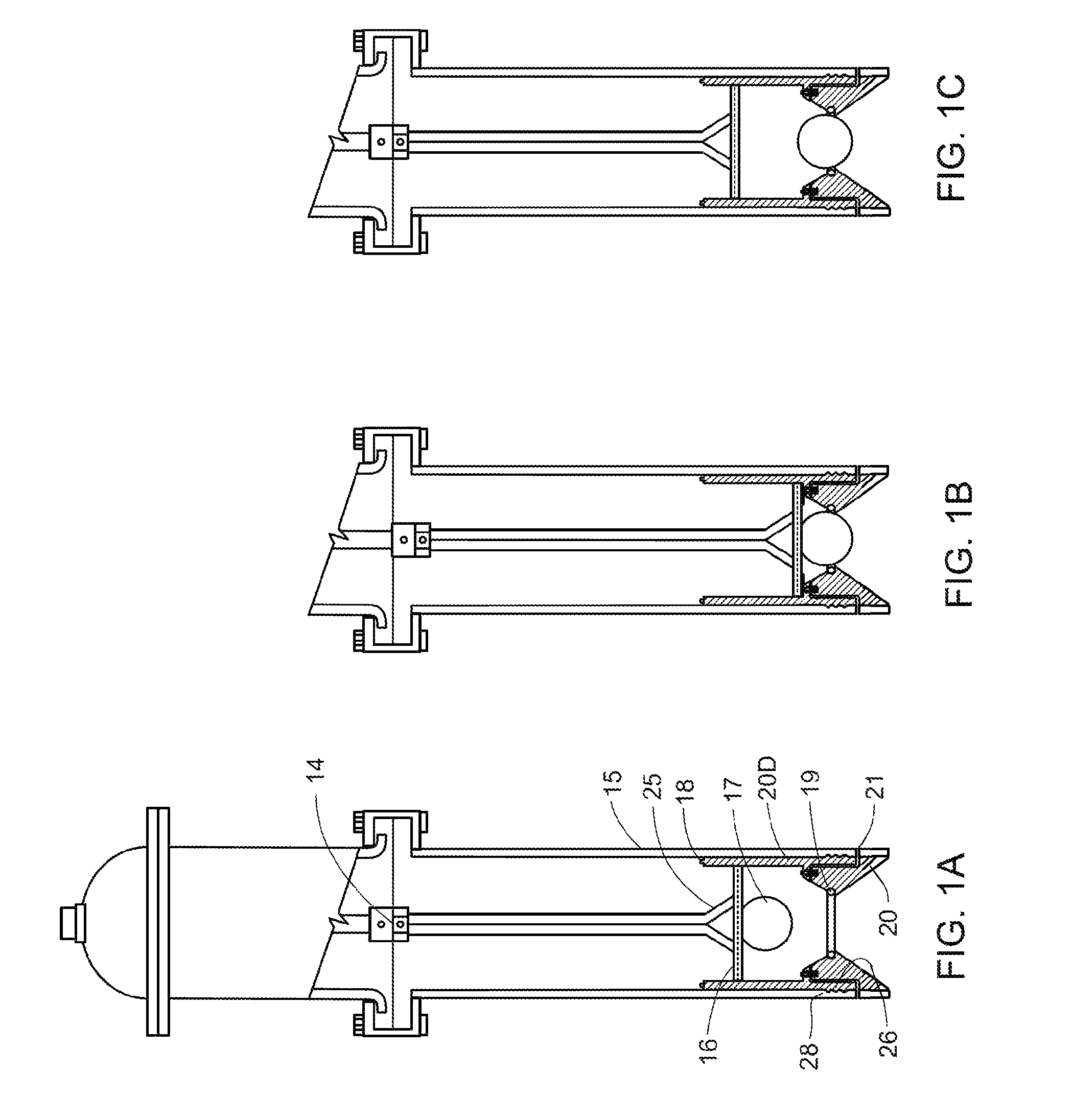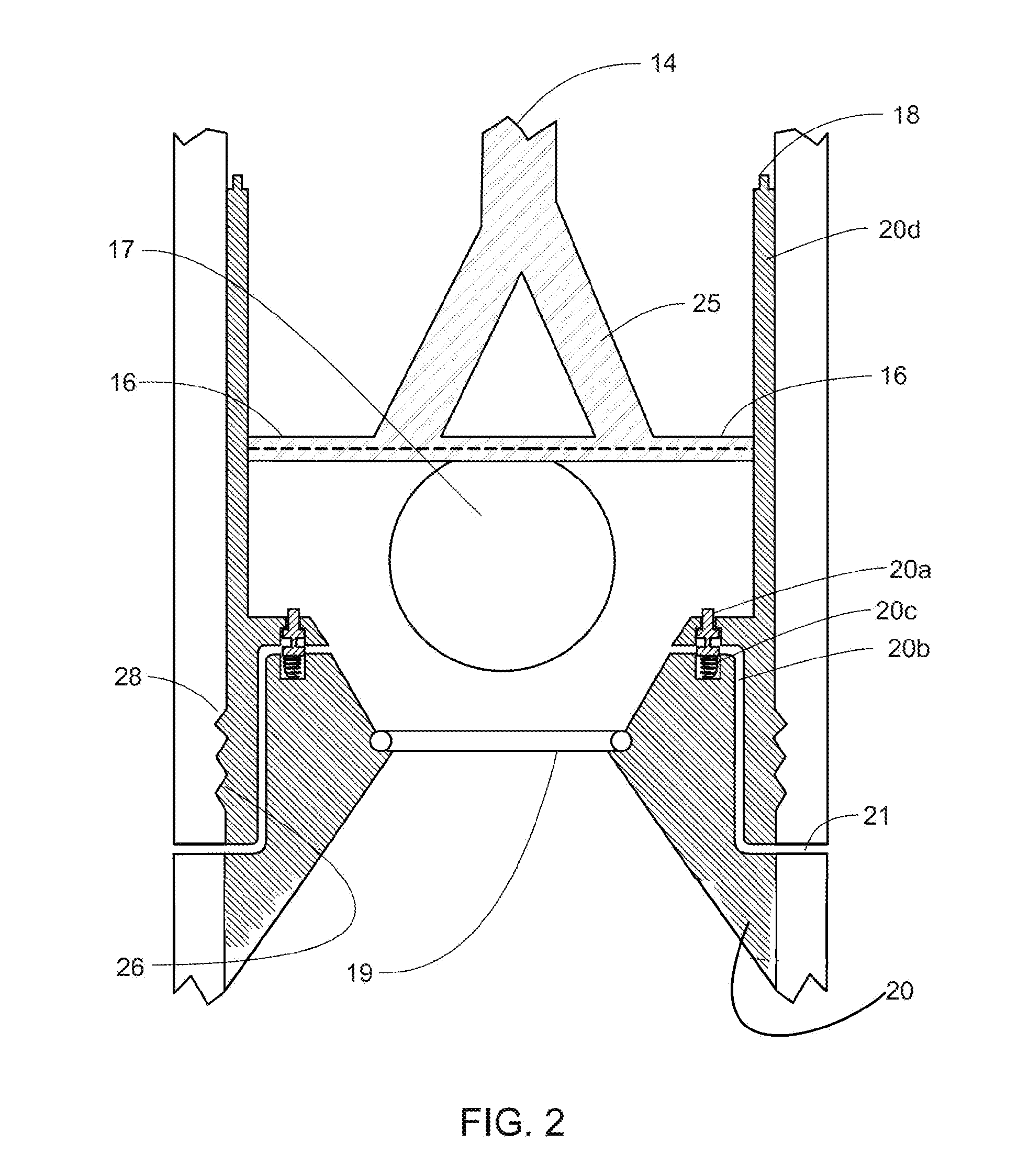Such an introduction of a toxic agent not only compromises the safety of an entire regional
potable water supply
system, it can even affect its future use, such as where significant affected portions of the
piping system must be replaced.
In addition, a conventional hydrant's main valve is occasionally exposed to large
suspended solids, such as pebbles.
This
exposure, which is caused by deterioration of the pipes in the water conveyance
system, prevents the hydrants main valve seal from properly sealing, i.e., making compressive contact with the hydrant's seal ring and ceasing all flow.
These design and operational problems are well known, and can occasionally cause costly site damage.
There are two primary issues that can cause a need for related maintenance, 1) Hydrant barrel fails to drain after use—which subjects it to freeze damage, and 2) During full open hydrant operation, continuous
discharge of water is taking place—which can undermine support for the installation.”
A partially opened hydrant can cause water to be forced out through the drains and cause
erosion around the base of the hydrant.”
The current and conventional remedy to these problems is frequent and costly field inspections, maintenance and repairs.
It is well known that use of a fire hydrant in a partially-open configuration can result in considerable flow directly into the soil surrounding the hydrant, which, over time, can cause severe scouring.
Moreover, the fact that either a hose with a closed
nozzle valve, a fire
truck connection, or a closed
gate valve is generally attached to the hydrant prior to opening the hydrant's main valve, can further exacerbate this problem.
Vandals occasionally cause monetary damage by
wasting water when they open a fire hydrant.
Such vandalism can reduce municipal
water pressure, and can create a potential local
backflow problem due to concomitant uncontrolled and sustained reduction in system
water pressure.
Ultimately, this can impair firefighters' efforts to extinguish fires.
Unauthorized entities who
gain access to this type of mobile tanker, which can contain, for example, 5000-8000 gallons of liquid, can easily introduce a significant quantity of dangerous CBR agents into a water system by injection into a hydrant's
discharge ports.
Less likely, although possible, is the injection of a contaminant through the external dry barrel hydrant drain holes using a collar.
However, (emphasis added) decontaminating a potable water distribution system of a CB agent may take several days.
Radioactive material releases can contaminate a water distribution system making it unusable for months or even years creating an enormous health
impact.
If a small military camp was targeted, the camp could be moved, but if a large distribution system was attacked, the problem of supplying water could be detrimental.”
Therefore, needing to be visible and accessible, they are not tamper resistant.
They are costly and labor intensive to install.
Left unchecked, hydraulic reversal can compromise the quality and safety of a building's potable
water supply system and, potentially, the municipal water
supply distribution system as well.
This leaves such buildings' internal drinking water supply vulnerable to injection of a
toxic chemical, radiological or biological contaminant into the building's water supply system, with the added possibility of contaminating the municipal water
supply distribution system in the process.
However, simply requiring building owners to undertake major re-plumbing and install these
backflow preventers between the municipal water service distribution lines located in the street and downstream of the building's water meter does not address a given building's
vulnerability to intentional
contamination from within.
Retrofitting a conventional backflow preventer to protect a building's internal potable water distribution system from possible intentional
contamination at every point-of-use water supply terminus, such as, for example, by installing shutoff valves for all kitchen and bathroom fixtures, drinking fountains, hose bibs, etc., can be very expensive.
Second, access for repair and replacement would be required for the maintenance of each such backflow preventer, since, as noted, these devices tend to be mechanically complex.
Even in new construction, installation of conventional back flow preventers for each point-of-use fixture would be costly.
Backflowpreventiontechzone.com), it was noted that plumbing system cross connections between (i) potable and (ii) non-potable water supplies, water using equipment, and drainage systems, continue to be a serious global potential
public health hazard.
Wherever people congregate and use communal water supplies, water using equipment, and drainage systems, the danger of un-protected cross connections continues to threaten
public health.
The report further noted that while backflow preventer device development began to accelerate and diversify beyond simple check valves in the mid-20th century, potable (“city”) water
piping systems and water using equipment, especially as found inside industrial and medical buildings, have grown exponentially in complexity and are also continuously altered.
Buildings located near a municipal water main break or an
open fire hydrant will thus experience a lowering of
water pressure and possibly backsiphonage.
As noted above, hydrant security is currently relatively vulnerable to breach by a cunning terrorist.
For example, vandals, or a fire located remotely where the demand for water adversely affects the pressure at other locations in the water
supply distribution system.
 Login to View More
Login to View More  Login to View More
Login to View More 


